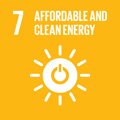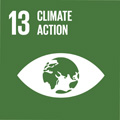- Docente: Michele D'Ostuni
- Credits: 4
- SSD: ICAR/12
- Language: Italian
- Teaching Mode: Traditional lectures
- Campus: Cesena
- Corso: Single cycle degree programme (LMCU) in Architecture (cod. 9265)
Course contents
The concept of "Living" is the field of investigation and argumentation of the course. Specifically, residential housing, especially through the renovation and conversion of existing building stock, represents a field of application of professional activity that promises to be one of the most widespread opportunities for recent architecture graduates.
The fourth year is a year of advanced maturation in the awareness of the different knowledge that converge in the discipline of design. The course, through the interaction of the disciplines of composition and architectural technology, aims to stimulate a synthesis of this knowledge by applying it to the small scale of the home and inverting the observation point of the architectural form.
Through an educational process aimed at developing the student's sensitivity on issues related to sustainability and the comfort of indoor spaces, this module aims to provide the knowledge bases for the correct environmental design of interiors.
The close collaboration with the Interior Architecture II module will determine a unity of objectives, while highlighting the specificities of the two contributions. To this end, we will illustrate how the technological innovations and construction experiments that have intervened in the transformations of the ways of thinking about domestic space during the twentieth century and today have influenced the forms of contemporary living.
Readings/Bibliography
Josifovic, I. & de Graaff, J. Urban Jungle: Living and Styling with Plants. Callwey Verlag, Munich, 2016 .
Bradshaw, V. (2010). The building environment: Active and passive control systems. John Wiley & Sons.P.Scheerbart.
Tucci, F. (2018). Costruire e abitare green. Approcci, strategie, sperimentazioni per una progettazione tecnologica ambientale-Green building and dwelling. Approaches, strategies, experimentation for an environmental technological design. Ediz. bilingue. Altralinea Edizioni.
Brandi, U. (2023). Light, Nature, Architecture: A Guide to Holistic Lighting Design. Birkhäuser.
Brandi, U. (2006). Lighting design: principles, implementation, case studies. De Gruyter.
Teaching methods
The course will proceed mainly through frontal lectures and seminars. Short exercises will be programmed during the semester to assess the advance in knowledge of the students.
The lessons are structured with the aim of providing students with the basic and specific knowledge to approach interior design in a contemporary way that respects the new needs relating to the sustainability of buildings. Lectures will focus on the technological and plant engineering aspects of interior design, with targeted insights during the educational path on the issues of environmental quality within residential buildings and the use of the green element as a furnishing and air purification element.
It is required that each student has a notebook that accompanies the learning path through the written annotation of the fundamental concepts and graphics of the case studies illustrated during the lessons.
The frontal lessons will be taught in direct contact with the students, aiming to develop collective discussion, referring the lessons to the broader themes of environmental sustainability and the sustainable development objectives of the United Nations, in particular with reference to the objectives: 11 (sustainable cities and communities), 3 (good health and well being), 7 (affordable and clean energy), 13 (climate action). In some cases the lessons will be accompanied by discussion seminars on the proposed bibliographic materials.
Assessment methods
The exam will take place in the form of an individual project ex-tempore on the basis of a case study in which each student will be able, on the basis of the compositional and technological knowledge acquired during the course, to demonstrate the degree of maturation in the ability to conform a living space. The test will take place with the explanatory support of freehand drawing accompanied by written notes and will be aimed at verifying the knowledge acquired on the topics covered in the lessons held within the two teaching modules, as well as the personal ability to elaborate them critically within a personal idea of formally and functionally organized space.
Teaching tools
Teaching will be conducted frontally with the presentation of slides relating to all points of the course program. All slides, together with additional images and relevant scientific articles, will be made available to students in PDF format via the Virtuale platform.
Office hours
See the website of Michele D'Ostuni
SDGs




This teaching activity contributes to the achievement of the Sustainable Development Goals of the UN 2030 Agenda.
